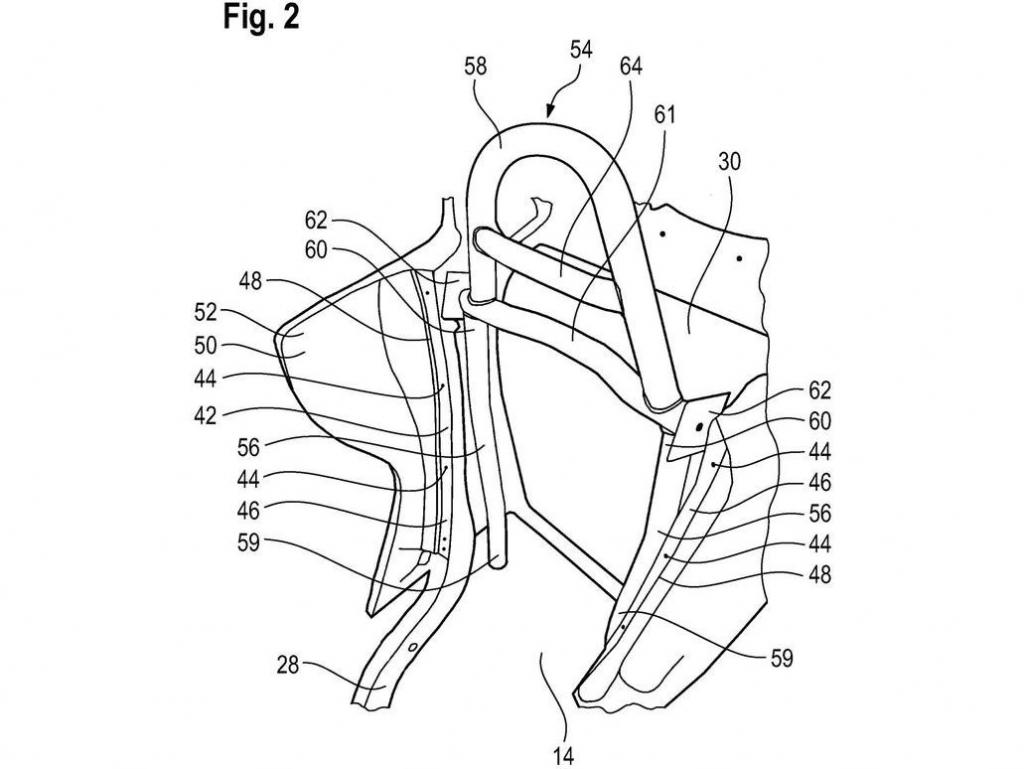BMW’s been on a roll lately with their crazy designs, with last week’s joystick steering wheel and more recently, this convertible electric scooter. Allegedly patented by the German automaker, the latest conceptual diagrams depict your standard scooter with not-so-standard features. The community was quick to spot the two-wheeler’s seat belts, airbags, and a carbon-fiber roof, the latter of which appears to be removable, according to the figures, at least.

The scooter concept is not entirely new to BMW—the tech giant’s natural aptitude for two-wheel transportation existed long before they started making cars, when they released the R32 Motorcycle in 1923, five years ahead of their venture into the automotive industry. Two decades ago, we saw a similar enclosed design with the brand’s C1 scooter. Since then, BMW has entertained the concept of personal transportation and urban mobility on a more sustainable and more accessible scale, starting with all-electric C Evolution scooter and on an even smaller scale, the Personal Mover for use in sprawling production facilities.
The original C1’s biggest handicap, as expected, was its weight—something that may have contributed to its slow sales. The 408-pound gas-driven scooter struggled under its own weight with a measly 15 horsepower, making performing basic tasks difficult. Today, with heavy batteries, a similar problem is posed—but as electric technology continues to evolve, these types of shortcomings are more likely to be acknowledged and handled in pre-production development.

Fortunately, it looks like BMW is doing just that. Continuing in conjunction with their new electrified image, the patent depicts a battery compartment, indicating that the scooter will be all-electric, with a chassis based on the aforementioned C Evolution design. Addressing the weight issue, it appears that carbon-fiber composite and aluminum are to be used in the build construction, allowing for weight-saving benefits as well as increased vehicle flex and rider safety.
Besides the depiction of possible crumple points, the scooter concept also illustrates a full four-point harness and bucket seat system, along with what appears to be side-panel airbags. Putting safety first, the airbag system would be invaluable in the case of a minor accident or rollover.

Though the side and rear impact system may make sense due to safety regulations, the inclusion of active aerodynamics may come as more of a surprise to possible consumers. Going back to their aviation roots, it appears that BMW has included hinged flaps, similar to ailerons on fixed-wing aircraft, actuated by the bike’s ECU, that may assist the rider in the case of heavy winds by redirecting strong forces safely. It not only is an efficient design, but an innovative and perhaps necessary one at that—this type of technology could counteract the top-heaviness of the curved roof when in motion.

With a flurry of patents popping up online hinting at new electric technology from BMW, it will be interesting to see what actually gets put into play. Though the future is uncertain, we do know that BMW has some seriously cool ideas, and that these patents, if anything, show that new tech may just be around the corner.
[Photos courtesy BMW AG, European Patent Office.]





















